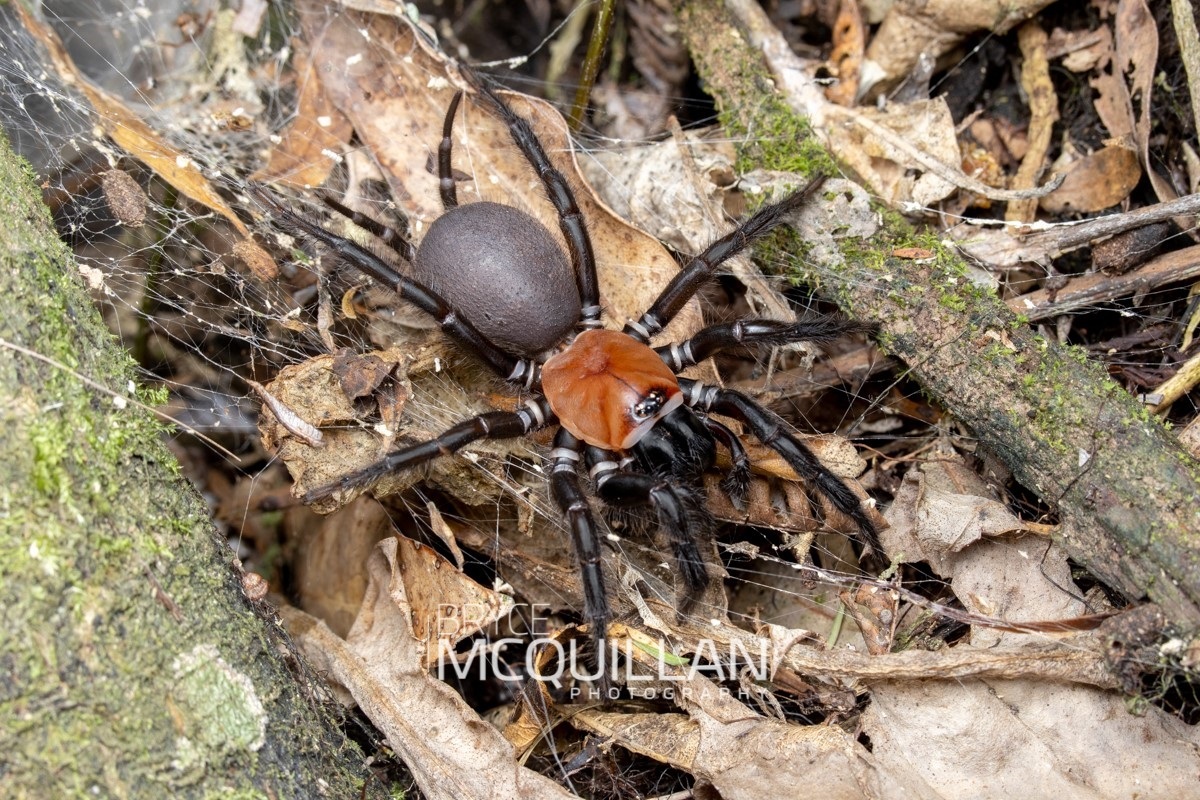When they visited our shores in 1827, scientists on the French ship Astrolabe collected a number of New Zealand species. One of them was Porrhothele antipodiana, the tunnelweb spider, which 10 years later became one of the first New Zealand spiders to be described.
Female tunnelweb spiders can reach more than 3 cm in body length, making the species one of New Zealand's biggest spiders. Tunnelwebs live under logs and rocks throughout the South Island and the lower North Island. They are also found on Chatham Island, where they were probably accidentally introduced from mainland New Zealand.

More recently, the species served as the inspiration for the monstrous spider Shelob in Peter Jackson's Lord of the Rings films.
Unlike most of New Zealand's 2,000 spider species, the tunnelweb is relatively well-studied; its physiology and behaviour have been explored in detail. But we're still learning about its family connections in Australia.
In 1985, Robert Raven of Queensland Museum placed it in the family Hexathelidae alongside New Zealand's banded tunnelweb spiders (Hexathele) and the Sydney funnelweb spider, Atrax robustus – one of the most venomous spiders in the world.
Dr Raven was writing about mygalomorphs, a large group of spiders with ancient characteristics which includes tarantulas, funnelweb spiders and trapdoor spiders.
While his paper is still considered a landmark work in spider systematics – the study of how species are related to each other – it was based on species' physical characteristics. Many mygalomorphs look very similar.
One way to test relationships between spider species is to compare their venom; closely related spiders typically have similar chemicals in their venom. Could the family Hexathelidae really include one of the world's most venomous spiders as well as the harmless Porrhothele antipodiana?
In 2006, Drs Marshal Hedin and Jason Bond analysed DNA sequences from many mygalomorph species, and found that all was not well in the family Hexathelidae. Their data suggested the family didn't share the same common ancestor; in fact some hexathelids were more closely related to spiders outside the group than they were to other hexathelids.
A subsequent study published last year by Hedin, Bond and other arachnologists including me, looked at genetic data from more than 30 species. It confirmed that the family Hexathelidae doesn't share a common ancestor. We learned that Sydney funnelweb spiders are actually more closely related to a family from Australia and South America that includes the colourful and highly venomous Missulena (mouse spiders) than they are to New Zealand's tunnelwebs.
But what do those results mean for our endemic tunnelweb spiders? Porrhothele antipodiana is no longer part of the family Hexathelidae, which has been pruned down to only Hexathele and six other genera found in Australia, Chile and Argentina. Porrhothele is now in its own family, Porrhothelidae, which is found only in New Zealand.
After 182 years of scientific investigation, we are still learning new things about one of New Zealand’s largest spider species.





